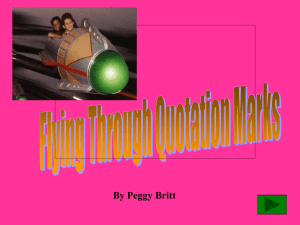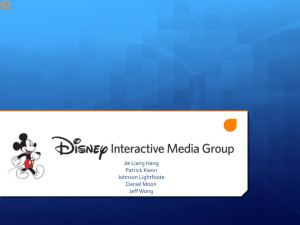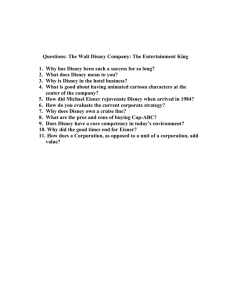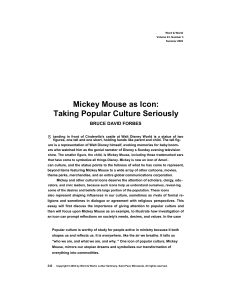Mickey Mouse as Pop Culture Icon, They Say I Say Chapters 1 and 12
advertisement
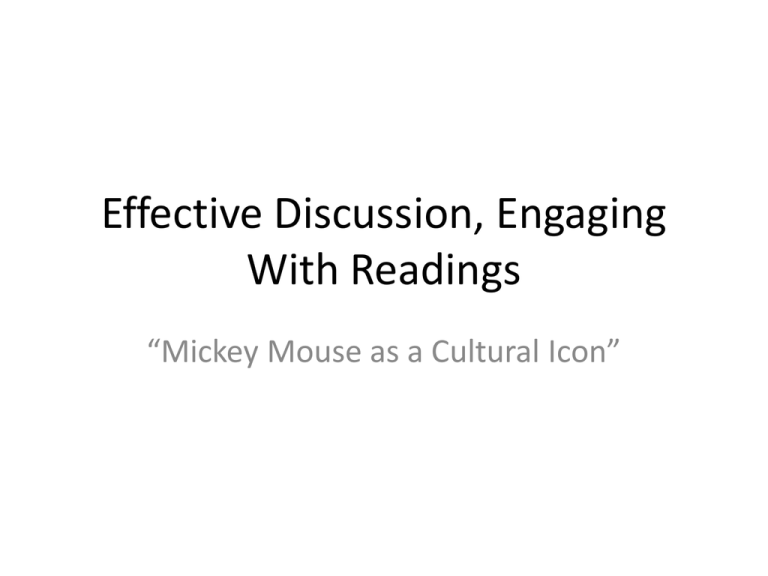
Effective Discussion, Engaging With Readings “Mickey Mouse as a Cultural Icon” Quickwrite #2 Before you write: Definition time! A “cultural icon” is a piece of pop culture (an image, a celebrity, a musical artist, etc.) that is so popular as to be immediately recognizable to most people in a culture AND that stands in for an entire set of ideas and values. What do you think about Mickey Mouse and the Disney company as “cultural icons”? What ideas/values present in our culture does Disney “stand for”? Encouraging Effective Class Discussion • Have respect for your classmates, even when you disagree with their ideas. • Take time to gather your thoughts. There is no prize for having your hand in the air first. • Build our class’s understanding of the topic at hand by… – Adding an additional point or example to what someone else has said. – Connecting two ideas that have been discussed separately. – Challenging what someone else has said by countering his or her points. – See p. 164-166 in Ch. 12 of They Say, I Say for more pointers. • Ground your discussion of a text by quoting specific, relevant passages of the articles we read. Engaging With What You Read • I will be asking you to engage with the articles I assign this semester rather than simply reading. • For each assigned reading, you might… – Do a reading response – Annotate (See p. 3 of Mirror on America for an example of annotation.) – Look up unfamiliar words. – Come to class with questions, concerns, or ideas that the reading inspired in you. • Remember, the more carefully you read and prepare at home, the more fully you will be able to participate in the class discussion of the reading and its ideas. Discussion of They Say, I Say Reading • According to the authors of They Say, I Say, why is it important to position yourself and your ideas in relation to what other writers have said about the topic? (Review the Intro and Ch. 1 if you can’t remember.) • What do you think of the idea of using templates? Do you agree with the author’s arguments in favor of them? Ch 12: Reading for the Conversation • Why is it so important to understand the ideas an author is responding to as we discuss individual essays? • What are some of the cues authors might give us to indicate that they have been summarizing a point of view that is not their own? – Transition phrases such as “however,” “even though” – Switch to first person point of view “Mickey Mouse as a Cultural Icon” • What do you think that the popularity of Disney tells us about ourselves? (Remember, students of pop culture believe that the things that we collectively make popular reveal what we value/desire.) • What do you think of the criticisms of Disney that the author discusses? • What concerns does the author seem to have about Disney? (This is different from the concerns he discusses that other people have.) Disney and Diversity • One of the criticisms of Disney that Forbes discusses is the fact that it has, historically, tended to reflect a predominantly white, middle class world view. While Disney has certainly recently attempted to tell stories about characters who do not reflect this world view, the criticism remains. • Two questions: – What do you think of this criticism? If it’s true, why might it matter? To WHOM might it matter? – How much responsibility does any writer/producer of media have to present a diverse, well-developed cast of characters? (And does Disney, because it is so powerful and influential, have more of a responsibility than most companies?) Practice Using Templates • We are going respond to the essay we read for today using ideas from They Say, I Say. • Identify an idea in the essay that you would like to respond to. • You might start with the template: • In his article “Mickey Mouse as a Cultural Icon,” Bruce David Forbes makes the point that ________________, which is particularly important because ____________________. • Try to use at least one other template from Chapter 1. • If you are talking about ideas you have held for a long time, you might want to consider the templates on p. 24 under “Making something “they say” something you say” • If you are talking about ideas that you feel lots of other people (the “general public”) have, you might want to consider the templates on the top of p. 24. • When you are finished, consider how using a template worked for you. Did you find it easier than coming up with your own structure? Harder? Why? For Next Class… • Start to notice whether or not the media you watch/listen to are diverse. If they are, how are minority characters and issues treated/developed? • Do work listed on the syllabus. • If you want to come to class even more prepared, do research on your own on what is being written about the issue of diversity on TV and in film.


